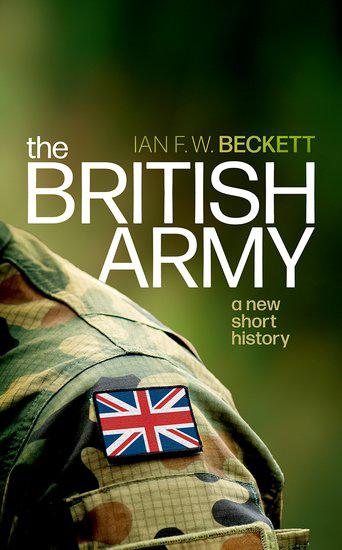CHACRCRITIQUE
NOVEMBER 2024 #14



NOVEMBER 2024 #14


Much of Ian Beckett’s excellently written and comprehensively researched ‘short history’ will be familiar. Read a little closer and it will offer something to even the best informed. This almost appears ‘a’ – if not necessarily ‘the’ – capstone of a long career in which study of British military history has meant close reference to the actions of this book’s focus. The author is to be congratulated for producing much more than simply a concise addition to the literature; this is a superior foundation for anyone who wants to better understand both this fighting organisation and its link to modern Britain.
This is as much a cultural and social history than an examination of battles, bullets and bombs which emphasises the diverse links between the military and those whom it protects. The author notes: “An army exists to fight... and the army’s story cannot be divorced from those wars and conflicts that have punctuated its evolution.” There is “attention... paid to the battlefield” and some mention of the intricacies of fighting, but these are supporting rather than supported, constructed around familiar stories which link together easily. Its five chapters do exactly as the cover claims – delivering a historical examination of the British Army, which from its origins in the 17th century “assisted in the creation of British identity”. Amongst the many themes examined within a broad chronological framework, the organisation’s structural design is a golden thread told through 350 years of successes and failure.
Without trying to summarise what is already a historical synthesis, the final chapter contemplates the creation of a ‘global army’. In this there are actually two armies, one contributing to European security and thinking about high intensity conflict and the other “quasi-imperial” and consumed by a toxic mix of counter-insurgency followed by peace support and stabilisation operations. This allows for further examination of two key recurring ideas. The first that, other than a formative initial 125 years following its creation, along with the two global conflicts of the 20th century, fighting in regular


TITLE
The
Published by Oxford University Press, Hardback, 240 pages, ISBN: 9780198871040
British
AUTHOR Ian F. W. Beckett
REVIEWER
Professor Andrew Stewart, Head of Conflict Research, CHACR
wars has not been the organisation’s default activity. Added to this is Beckett’s belief that at a popular level there is a lack of awareness as to what the British Army does and the ‘where’, ‘who’ and ‘why’ it has fought during the most recent 80 years of its existence. As he writes in the introduction: “There is a much wider popular sympathy for the army than previously, but this does not fill the ranks; nor does sympathy equate to understanding.” This societal ignorance begins at a political level where the last prime minister to have served in the military was Jim Callaghan during the 1970s; there is some apparent anger in the conclusion that there have been many Ministers of Defence who “were
less than distinguished, some truly pitiful”. The discussion is forceful – the author, for example, would not appear to have much enthusiasm for the “self-righteous Tony Blair” – as evidenced by his description of the fiscal reduction which followed the end of the Cold War and the significant concomitant impacts that have extended beyond simple structural change into culture, identity and ethos. This is all particularly relevant to readers today and current military discussions about reserve and territorial forces.
The final ten pages of the book are devoted to Iraq and Afghanistan and the military and political challenges they presented. As Beckett concludes: “… [both] provided salutary lessons for an army that has not consistently shown itself a learning organisation”. It ends with the then Secretary of State for Defence Ben Wallace’s reference in 2023 to a “hollowed out and under-funded” army with significant capability gaps as a consequence of almost unlimited support for Ukraine resulting in a size that no longer allows it to match its global ambitions and unable to embrace institutional learning. Of greatest concern is the suggestion that the connection between the organisation and the society it protects might now be irrevocably broken.
With its insightful yet serious tone, the book is also honest in its, at times, disheartening account of how the British Army has evolved into its current form. There is no conclusion as such but one is not really needed. The author makes his case powerfully in the final chapter and with a warning in the last sentence that “future governments might find it exceedingly difficult to go to war when British interests are really at stake”. It is up to the individual readers to determine if this is overstated or entirely plausible. The question remains as to the degree to which the organisation truly reflects the society it serves and protects and remains fit for purpose. It can only be hoped that both the recommendations made as part of the current British defence review, and the political actions that follow, help deliver a more obvious answer.
An extended version of this review will be published by the Australian Army Research Centre.